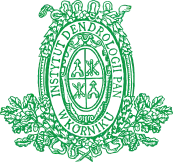Adam Boratyński, Montserrat Salvà-Catarineu, Katarzyna Marcysiak, Małgorzata Mazur, Ángel Romo, Pietro Minissale, Kit Tan, Grzegorz Iszkuło, Radosław Witkowski, Andrzej Mazur, Marta Kujawska
Biology and ecology of Juniperus phoenicea – J. turbinata – J. canariensis complex. III. Reproduction, herbivory, utilization, conservation
Dendrobiology 2025, vol. 94: 1-21
https://doi.org/10.12657/denbio.094.001
Abstract:
This review examines the literature on the reproduction, herbivory, parasitism, utilization, and conservation of Juniperus phoenicea, J. turbinata, and J. canariensis, which constitute the J. phoenicea complex. The review of taxonomy, structure, geography, and of genetics, physiology and ecology was presented in two earlier publications. Compared to taxonomy and genetics, as well as phytosociology, we find a relatively high number of studies concerning seed dispersal, but mainly for J. turbinata, and the utilization of biochemical components of leaves. The leaves and cones of J. turbinata and J. phoenicea serve as sources of volatile essential oils (EOS) with numerous chemical compounds traditionally used in local medicine, veterinary applications, and cosmetics. The wood is primarily utilized as fuel, particularly in regions where other tree resources are scarce. Studies in reproduction, herbivory, and conservation are limited in number and predominantly local in character. Thus, further research is particularly needed on seed pretreatment and preparation for germination, seed conservation and storage, vegetative propagation, and micropropagation, which could significantly aid in the restoration of ecosystems for all species of junipers here examined. Data on herbivory and parasitism affecting all three species are incidental, incomplete, and scarce. The conservation needs are determined only locally, and focus primarily on J. canariensis and maritime populations of J. turbinata. Conservation actions are rare, with efforts mainly directed at J. canariensis, while J. turbinata and J. phoenicea are passively protected in nature reserves, often covering restricted areas. European Union directives on coastal dune vegetation and Macaronesian juniper forest are the only broad international conservation measures for the remnants of J. turbinata in maritime dunes, and remnants of J. canariensis. However, a comprehensive international program for the conservation of the J. phoenicea complex outside Europe and the Canary Islands is lacking.
Keywords: seed germination, damage caused by animals, damage caused by fungi, uses, conservation











